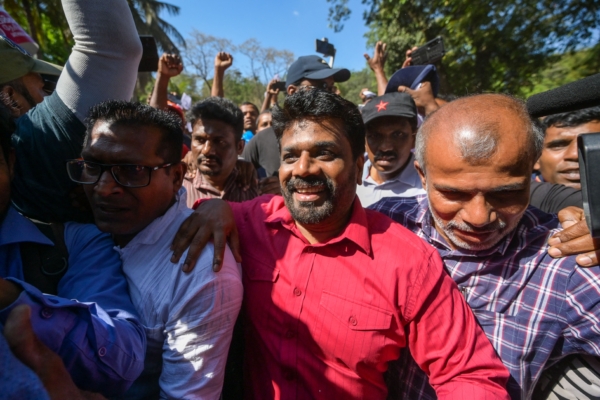Sri Lanka has elected leftist figure Anura Kumara Dissanayake as its new president on Sunday (September 22nd). After experiencing the most severe financial crisis in decades, voters have shown confidence in this 55-year-old candidate’s promises to combat corruption and promote economic recovery.
Dissanayake, as reported by Reuters, did not have a political background like his other competitors in the presidential election, but maintained a lead throughout the counting process, ultimately defeating incumbent President Ranil Wickremesinghe and opposition leader Sajith Premadasa to become the tenth president of Sri Lanka.
This election also served as a referendum on Wickremesinghe, who in 2022 guided the debt-ridden country towards economic recovery from a collapse but his austerity measures hindered his return to power, ultimately placing third with 17% of the vote.
Dissanayake garnered 5.6 million votes, representing 42.3%. In contrast, he only received 3% of the vote in the 2019 presidential election. After the first round of counting on Sunday, Premadasa secured second place with 32.8% of the vote.
Dissanayake first became a parliament member in 2000 and briefly served as the Minister of Agriculture and Irrigation under then-President Chandrika Kumaratunga. He first ran for president in 2019 and lost to Gotabaya Rajapaksa. Two years later, Rajapaksa was ousted from power due to public protests sparked by the economic crisis.
Following the first round of counting on Sunday, neither of the top two candidates received 50% of the vote, leading to a runoff in Sri Lankan presidential election history.
Dissanayake has expressed his intentions to renegotiate agreements with the International Monetary Fund to make austerity measures more palatable. After defaulting in 2022, Sri Lanka restructured its debt under an IMF rescue plan.
However, Wickremesinghe has cautioned that any significant changes to the agreement could delay the disbursement of the fourth tranche of nearly $3 billion, which is crucial for maintaining stability.
According to the Associated Press, Dissanayake’s National People’s Power Alliance (NPP) is led by the People’s Liberation Front (PLF, or Janatha Vimukthi Peramuna). The party attempted two armed uprisings in the 1970s and 1980s to seize power through socialist revolution but failed. After these failures, the People’s Liberation Front shifted to democratic politics in 1994, playing a significant role in the opposition.
Political analyst Jehan Perera stated that Dissanayake’s immediate challenge is to address the concerns of business and financial groups regarding his Marxist and revolutionary background while stabilizing the economy. Ali Sabry, who served as the Foreign Minister in the Wickremesinghe government, congratulated Dissanayake, expressing hope that he would lead with transparency, integrity, and a commitment to the long-term interests of the nation.
On Thursday, the Sri Lankan government announced it had reached a preliminary agreement with private bondholders, marking the last hurdle in the debt restructuring process.
At the time of default, Sri Lanka’s total domestic and foreign debt stood at $83 billion. Despite significant improvements in key economic indicators in recent years, the people of Sri Lanka continue to struggle under high tax rates and living costs.

